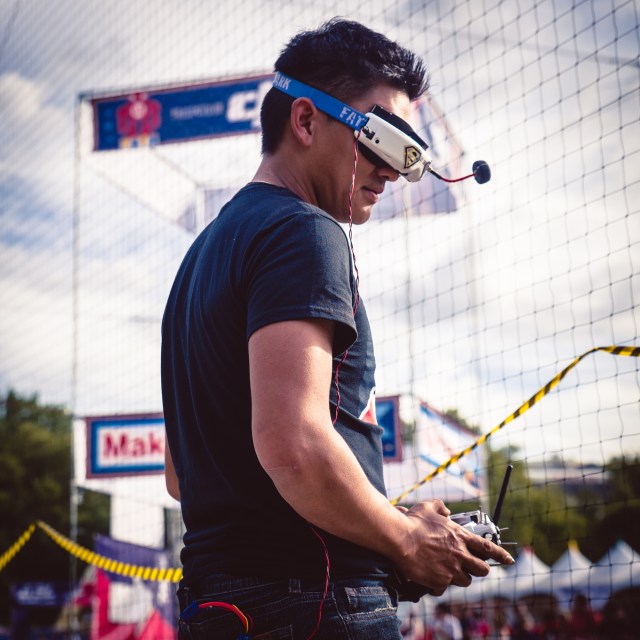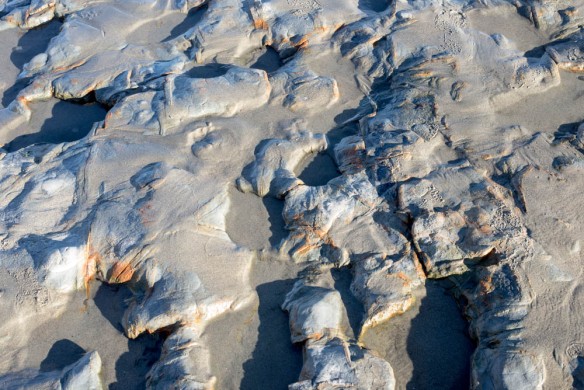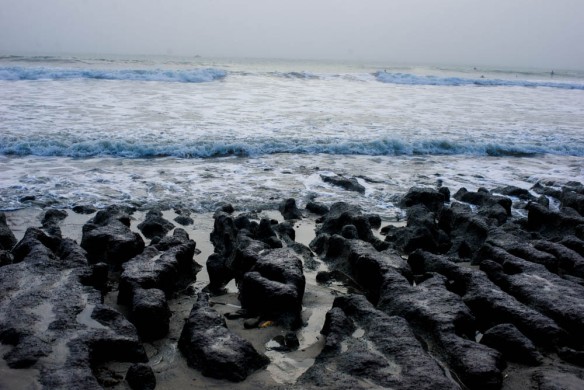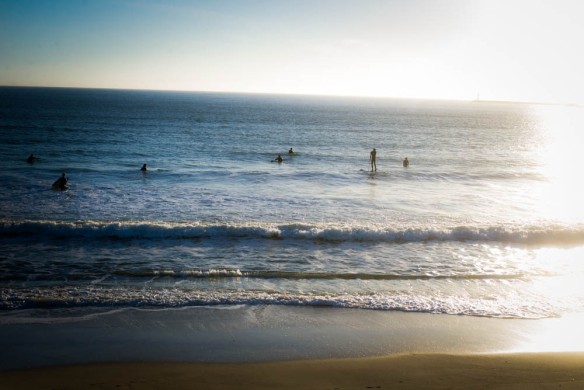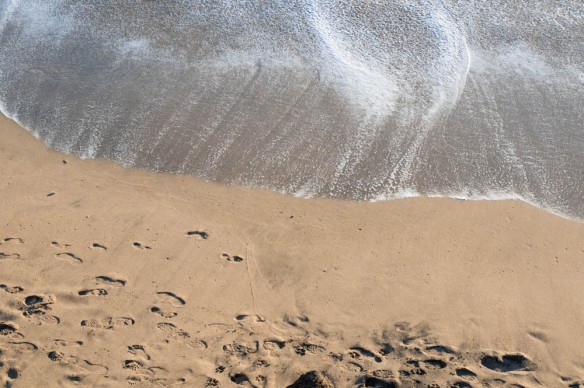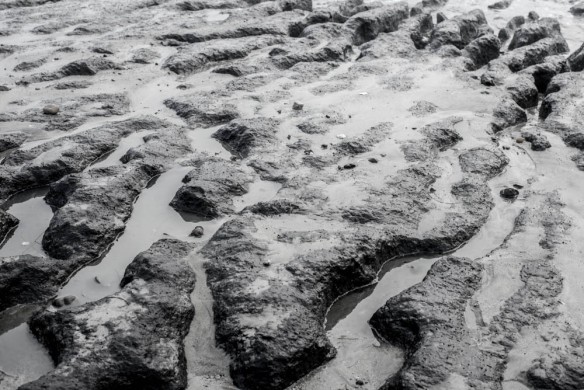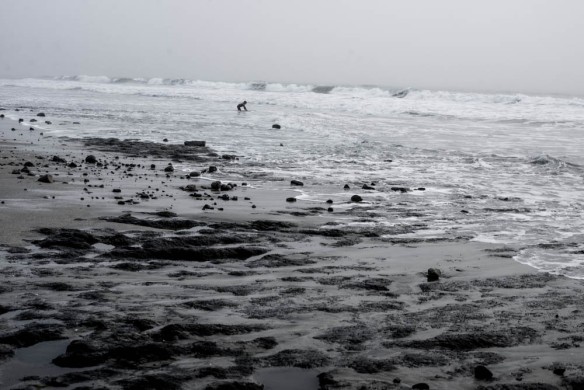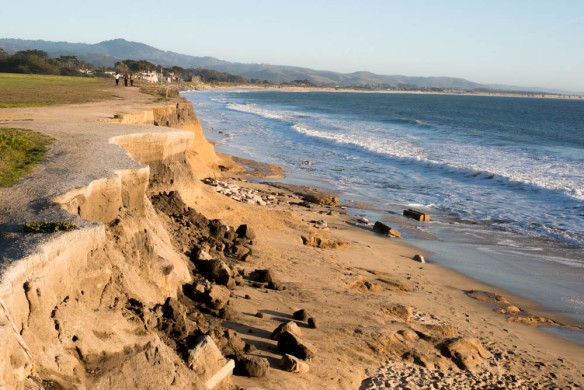I harbor a controversial belief: I like Florida.
It is time for me to admit that I am in fact from Florida – one of those curiously marked number who did not alight in the state from somewhere else on the way to somewhere else again. I was born in Tampa and my earliest culinary memory was of a Cuban sandwich with salami on it, which I feel gives me some validation.

My grandparents still live in Tampa, and I manage to make it there every year to visit them, usually meeting one or another family member at the Ancestral Residence, which is really just a nice white house on a canal. And reader, yes: I enjoy visiting Florida. I look forward to it. I am only a little crazy.
I admit it. Florida has a bad rap lately. This is due to the constant stream of absurdist news stories that come out of my native state’s swamps, beaches, and endless rows of slowly sinking tract housing: cannibals, drug-addicted women with funny names armed with rocket launchers, fatal bug eating contests, very slow but extremely determined dowager beach toy thieves, and an endless march of baroque sex scandals.

Florida is also the home of sundry political horrors, including such low-lights as George Zimmerman, hanging chads, and Mark Rubio’s furtive, terrified expression over a certain tiny water bottle. Finally, Florida boasts a remarkable menagerie of animal life: starting with pretty pink flamingos and ending with poodle-eating alligators, flanked by boa constrictors that happily live (and eat) in your pool shed.
With all these nightmares taken into account, why do I like Florida? I should sit down and make a little list.
1. The food is excellent and unusual. Florida is the most South American of US states for glaringly obvious geographic reasons, and boasts a diverse array of cuisines that can be rather difficult to find in many other bits of the continental US. Combine this South American potentiality with excellent fresh seafood and the influence of the other cultures who flock here to enjoy the weather, and you’ve got a delightful diaspora food scene. Guatemalan, Cuban, German, Vietnamese, gulf-coast seafood, and barbeque are readily available. (But forget about Chinese, I haven’t figured that out yet.)

Whenever I come to Tampa, I ritualistically track down and devour a Cuban sandwich, made with ham and pickles and salami and cheese on pressed, garlicky bread. For some reason, the best Cubans almost always lurk within the suspicious facades of gas station cafes.
Whenever I visit, I also find myself eating at least one fish sandwich — flash fried and served on a sesame bun with a bit of mayonnaise, a classic that Frenchy’s over in Clearwater probably does best with fresh slabs of flaky grouper. (The conservation status of grouper being what it is, you’re better off ordering mahi-mahi). If they’re on offer, I always like to order Greek-style boiled shrimp: plump shell-on beasts served with a marinade of olive oil and oregano and lemon.
There is also Key Lime pie, which out of state bakeries usually butcher into a green, artificially flavored abomination that sits unloved on the buffet line. Here, Key Lime pie is a fine art. It must be off-yellow, the graham cracker crust must be fresh, and it must taste aggressively of fresh, real-world key limes — offset with a bit of sour cream and condensed milk. The Publix key lime pie? It’s just fine.

2. The exhilarating feeling of living in a place that wants to kill you. If you’re from Down Under, you will immediately and viscerally appreciate this. Florida and Australia’s tropical regions are very similar places — fetid, lush, and full of fecund creatures that are capable of harming or killing you. One can only imagine the profound terror Florida’s earliest settlers must have felt when first entering this actively hostile but rather interesting ecosystem, an adrenaline rush any average Florida homeowner can experience if they regularly turn over rocks in their backyard.

Floridians do not get complacent: as soon as one begins to forget about the reality of alligators or Burmese Pythons, one comes across a prehistoric beast curled up quietly in your grill, or waddling with grim determination across the interstate on a Tuesday morning. Beware.
It doesn’t end with giant reptiles, of course. We have insects as well, ranging from venomous, swarming fire ants to gigantic cockroaches that are delicately called “Palmetto bugs.” In recent years, Florida has in fact witnessed an unholy battle between non-native fire ants and equally non-native but meaner Raspberry Crazy Ants — little creatures that like living inside one’s personal electronics, and die in such voluminous numbers that they resemble brown snow.
Finally, we have sharks. I have vivid memories of being a little kid, vacationing on Boca Grande, and being told that it was not OK to swim in the ocean at night. I asked why not, and was told, quite seriously: “That’s when the sharks hunt. They attacked a guy swimming off the dock last year.”
And for years afterward, I was even more convinced than most children that sharks lived in swimming pools.
I firmly believe that residing in places full of top predators and malevolent insects and deadly sea-life makes one smarter, in the classic Darwinian sort of sense — or at the very least, it makes one feel a lot less bored. I attribute any modest life success I have experienced to my early encounters with Florida’s natural wonders.
I also have some anthropological theories about why this proximity to natural danger makes both Floridians and Australians unusually fond of drinking cheap beer while wearing tank-tops, but that will have to wait until next time.

3. The platonic ideal of Gulf Coast beaches. I grew up on Florida beaches, and although I have lived in California off-and-on since 2001, I never accepted these chilly and wind-swept expanses that Bay Area denizens rave about as the real thing. What good is a beach if the waves can merrily break your bones, and if you require a wetsuit and a powerful insurance policy just to go for a dip? Why would anyone spend much time on a beach that is regularly swept by chilly winds, and obscured by great inrushes of fog?
But Florida beaches — they’re superior. They have plush white sand that grows warm and chalky by 10:00 AM, and banks of seaweed that take on a vague but nostalgically fishy smell, one I find immensely and immediately evocative. The water is bathtub warm and very shallow, and as kids, we took great delight in swimming out a seemingly impossibly long distance to stand on the sandbar, and look back at our families waving at us from the shore.

Even at the edge of the water, there are small quotidian delights: sand crabs burrowing like frightened white groundhogs, and the astounding array of fashion-swatch colors found in tiny, sand-loving coquina clams.
I would gather these coquina clams in line with the finest designs, and deposit them in small sand enclosures on the beach — they resembled something out of a cartoon, small living chips of a mosaic. To this day, I find it remarkable that something so colorful is real.
Suck it, Northern California beaches, where you have to put on a windbreaker just to go read your book.
4. Enormous thunderstorms. This may sound unusual, but hear me out: the weather in California is boring. The weather forecasters in most of California look so completely under-stimulated that you can tell they’re just hoping for a tsunami or heinous earthquake to manifest, anything to break up the horrid monotony of predicting — yet again — that it will probably be sunny and somewhere between 65 and 80 degrees.
Not so in Florida, where enormous, lurid thunderstorms roll in most afternoons with little advance warning, savagely drenching tourists from New England who lack the biological adaptation to weather that wants to maim you.
But Gulf Coast residents know better. Experienced Floridians know an impending thunderstorm or two-day hurricane is a delightful excuse to hole up on your screen porch with some alcohol and the latest Carl Hiassen book. It’s free entertainment: as a native Floridian, I might even pay good money for a channel that played nothing but aggressive storms at regular intervals. This could also explain why I’ve adapted so nicely to the similar weather in Southeast Asia.

5. Ridiculous gift shops. Florida is and has long been America’s finest purveyor of tacky tourist experiences and the cheap, bizarre crap that invariably accompanies them. As a young patron of the touristy Greek enclave of Tarpon Springs, near Tampa, I fell in love early with pink and green rubber sharks that squeak when poked, preserved alligators that are pretending to smoke cigars, vaguely pornographic postcards featuring bikini models from 1981, and endless variants on the theme of Yard Flamingo.
Now, these strange objects are imprinted into my soul, and some instinct deep within calls to me gently, imploring me to fill my future home with a healthy assortment of bullshit Florida tourist goods.
I mostly resist, but I know there is a day coming when I will outfit multiple rooms of my future domicile with weird little magnets and decorated, plasticized puffer fish. There is no sense fighting this. Indeed, I await it, hungrily.

There are probably more reasons I like Florida, reasons that embedded deeper in my psyche and are harder to outline in simple list form. Perhaps the main one is that I was born there and have gone every year, and one’s birthplace — even one as fetid and surrealist as Florida — becomes imprinted into one’s DNA. Our geography makes us who we are, and we are always inclined to remember it.
I believe this geographical theory, as I look out across a scrubby landscape of palm trees and South American strip malls and poorly-parked Cadillacs, all of it sinking further into the ocean with each passing year.
“Ah,” my mind says. “This is fetid and trashy! And this I understand.”


